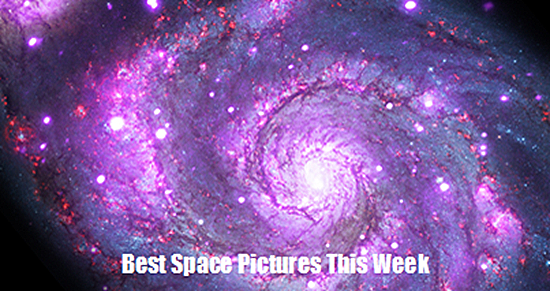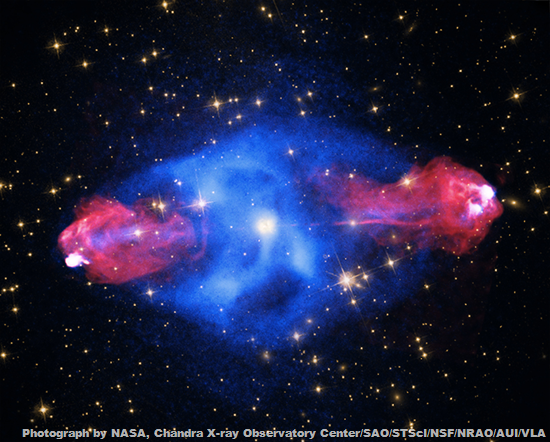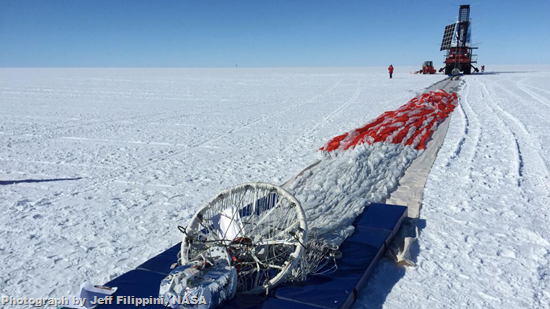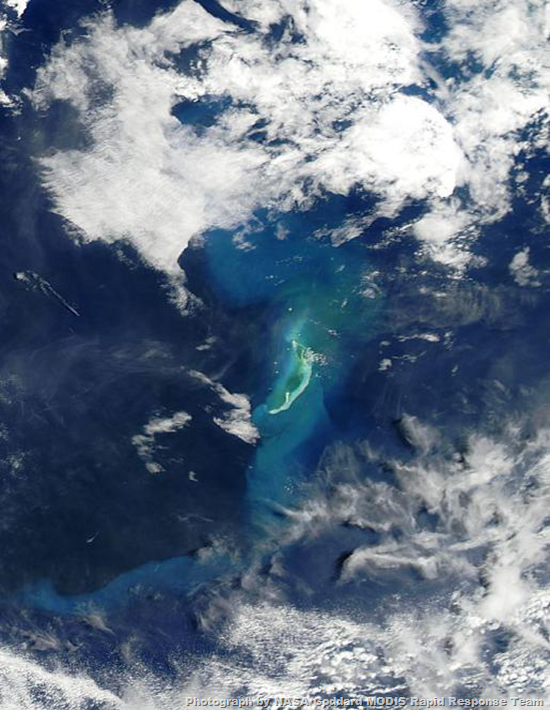
Week's Best Space Pictures: Stars Wheel, a Balloon Hoists, and a Storm Churns
By Jane J. Lee, National Geographic News, 23 January 2015.
By Jane J. Lee, National Geographic News, 23 January 2015.
Stars careen across the Himalaya, scientists search for an afterglow, and a cyclone kicks up a fuss in this week's best space pictures.
1. Let There Be Light
A composite image of elliptical galaxy Cygnus A jumps off the page like a Rorschach test in Technicolor. X-rays blaze in blue, radio signals radiate in red, and visible light twinkles in yellow.
NASA released the picture in celebration of the 2015 International Year of Light and Light-Based Technologies. Proclaimed by the United Nations, this year will celebrate the ways in which this form of energy improves our lives.
2. Happy Trails
Star trails appear to spring from a moonlit ridge overlooking Himachal Pradesh (map), a state in northern India. Photographers capture the path of stars across Earth's sky using multiple long exposures. This image is a combination of 76 photographs exposed for 20 seconds each.
3. Afterglow
Fourteen billion years ago, unknown forces blasted our observable universe - about the size of an atom at the time - out into the vast reaches we see today, with most of the expansion happening in just a fraction of a second. Such a violent event should have left behind evidence in the form of background microwave radiation.
Today, researchers in Antarctica are hunting for that afterglow. The continent's clear skies allow special telescopes (bottom of image) lofted high into Earth's atmosphere to pick up on the big bang's signal. In the picture above, scientists use a giant helium-filled balloon to hoist their equipment.
4. Frosty Crater
During late winter on Mars, south-facing slopes in the red planet's southern hemisphere glimmer with a coating of frost. Images of this same area later in the Martian year give researchers a glimpse into how changing seasons affect the planet's surface. (See "Mars Snow Falls Like Dry Ice Fog.")
5. Swirl of Light
As part of the celebration of the 2015 International Year of Light, NASA pulled together data from Hubble, Chandra, and other instruments to make this image of the Whirlpool galaxy, a spiral galaxy 30 million light-years away from Earth. The composite picture combines x-rays (purple), ultraviolet light (blue), visible light (green), and infrared (red) emanating from the galactic swirl.
6. A Bright Eye
Tropical Cyclone Bansi charges across the Indian Ocean on January 17, sporting quite an illuminating eye. Astronaut Samantha Cristoforetti, on board the International Space Station, snapped a picture of the storm right when lightning lit up the centre of the cyclone. The funnel-shaped eye is clearly visible to the bottom right side of the lightning strike. (Learn about hurricanes, cyclones, and typhoons.)
7. Distant Waters
Powerful storms like Cyclone Bansi - which rampaged across the Indian Ocean late last week - can sometimes gift us with beautiful images. Sediment kicked up by the storm turned seawater surrounding reef flats near Mauritius (map) a sparkling sea-green.
Photo gallery by Sherry L. Brukbacher.







No comments:
Post a Comment
Please adhere to proper blog etiquette when posting your comments. This blog owner will exercise his absolution discretion in allowing or rejecting any comments that are deemed seditious, defamatory, libelous, racist, vulgar, insulting, and other remarks that exhibit similar characteristics. If you insist on using anonymous comments, please write your name or other IDs at the end of your message.